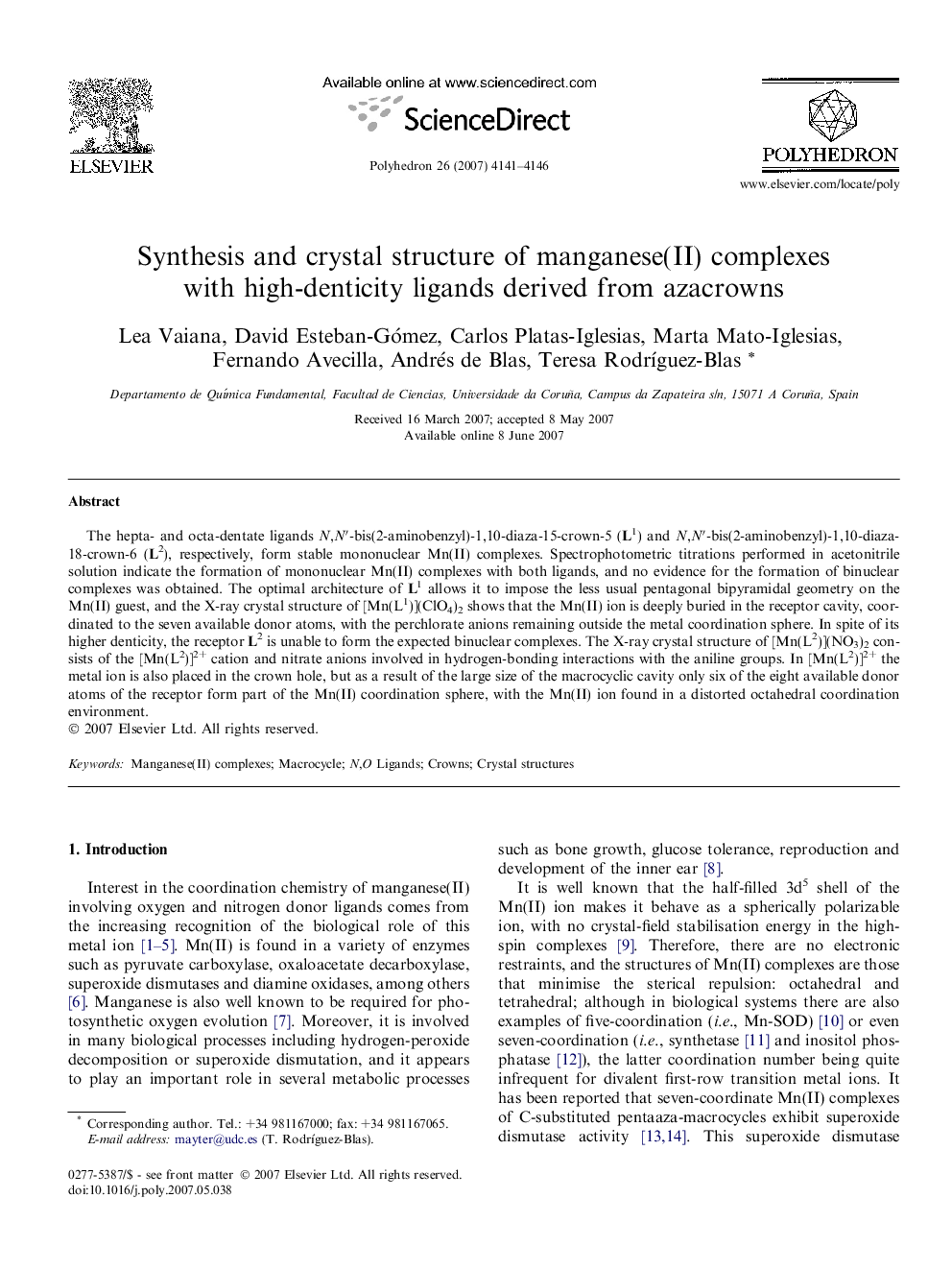| کد مقاله | کد نشریه | سال انتشار | مقاله انگلیسی | نسخه تمام متن |
|---|---|---|---|---|
| 1338290 | 979663 | 2007 | 6 صفحه PDF | دانلود رایگان |

The hepta- and octa-dentate ligands N,N′-bis(2-aminobenzyl)-1,10-diaza-15-crown-5 (L1) and N,N′-bis(2-aminobenzyl)-1,10-diaza-18-crown-6 (L2), respectively, form stable mononuclear Mn(II) complexes. Spectrophotometric titrations performed in acetonitrile solution indicate the formation of mononuclear Mn(II) complexes with both ligands, and no evidence for the formation of binuclear complexes was obtained. The optimal architecture of L1 allows it to impose the less usual pentagonal bipyramidal geometry on the Mn(II) guest, and the X-ray crystal structure of [Mn(L1)](ClO4)2 shows that the Mn(II) ion is deeply buried in the receptor cavity, coordinated to the seven available donor atoms, with the perchlorate anions remaining outside the metal coordination sphere. In spite of its higher denticity, the receptor L2 is unable to form the expected binuclear complexes. The X-ray crystal structure of [Mn(L2)](NO3)2 consists of the [Mn(L2)]2+ cation and nitrate anions involved in hydrogen-bonding interactions with the aniline groups. In [Mn(L2)]2+ the metal ion is also placed in the crown hole, but as a result of the large size of the macrocyclic cavity only six of the eight available donor atoms of the receptor form part of the Mn(II) coordination sphere, with the Mn(II) ion found in a distorted octahedral coordination environment.
Herein we describe the synthesis and structure of Mn(II) complexes with the heptadentate and octadentate receptors derived from azacrowns, N,N′-bis(2-aminobenzyl)-1,10-diaza-15-crown-5 (L1) and N,N′-bis(2-aminobenzyl)-1,10-diaza-18-crown-6 (L2), with which only mononuclear complexes are formed. L1 imposes a pentagonal bipyramidal coordination geometry on the Mn(II) guest, while L2 forms mononuclear complexes with the Mn(II) ion in a distorted octahedral coordination environment.Figure optionsDownload as PowerPoint slide
Journal: Polyhedron - Volume 26, Issue 15, 20 September 2007, Pages 4141–4146